Description
Classic Army M134A2 Minigun Hybrid Powered Airsoft Replica without Barrel Shroud
The Classic Army M1234-A2 minigun is the culmination of over a decade of research and development. Developed in collaboration with Pipers Precision the Classic Army M123-A2 minigun is the next evolution of Airsoft heavy weapons. The classic army M123-A2 features a unique firing system, not seen in any other product on the market today. An electric motor drives the barrels while the projectiles are powered by either CO2, HPA or compressed air from a compressor. Mimicking the design of the real M134-A2 minigun, the Classic Army M134-A2 will fire as long as the trigger is depressed. Fed by an internal reservoir of 2000 BBs the M134-A2 will provide unmatched support and firepower in the field.
While offering off the charts firepower the M134-A2 isn’t all function. CNC machined from metal alloy and constructed to a 1:1 scale, the M134-A2 looks as good as it performs and encourages the enemy to surrender, even before those barrels start spinning.
Note: CO2 or HPA tank and Regulator plus 12V battery REQUIRED (not included).
Features:
CNC machined full metal construction
Realistic 1:1 scale construction
Electric motor driven barrels
Full-auto firing mode only
“Chainsaw” style carrying handle and joystick trigger system
Six rotating barrels mimic the firing action of the real M134-A2 Minigun
Metal barrel shroud included
Electric motor is driven by a 12V battery
Can use HPA/CO2 or any other type of compressed air to propel projectile
SPECS:
Manufacturer: Classic Army
FPS Range: 550-600
Length: 940mm
Weight: 11,564g
Inner Barrel: ~501mm (Proprietary)
Magazine Capacity: 2000 round internal BB reservoir
Muzzle Velocity: 500-600 FPS (Depending on Regulator, BB and PSI used)
Rate of Fire: 50 rounds per second (3000 Rounds Per Minute)
Thread Direction: Unthreaded
Gearbox: Proprietary
Motor: Proprietary
Fire Modes: Safe/Full-Auto only
Battery: 12V battery to drive electric motor
Projectile Power: HPA/CO2/Compressed Air (for use at 150 PSI ONLY)
BB: For use with .20g or .25g Airsoft BBs
Hopup: Yes, Adjustable
Package Includes: Gun, Manual
Note: CO2 or HPA tank and Regulator plus 12V battery REQUIRED (not included).
90 Day Warranty.
When you absolutley must lay down some coverfire, or just want to have the coolest gun in the game, the CA M134 Vulcam Minigun is it. 27+ pounds of love and death, just makes you wanna weep like the enemy…
M134 History:
The M134 Minigun is a 7.62×51 mm NATO, six-barreled machine gun with a high rate of fire (2,000 to 6,000 rounds per minute). It features Gatling-style rotating barrels with an external power source, normally an electric motor. The “Mini” in the name is in comparison to designs that use a similar firing mechanism but larger shells, such as General Electric’s earlier 20-millimeter M61 Vulcan, and “gun” for a caliber size smaller than that of a cannon, typically 20 mm and higher.
The Minigun is used by several branches of the U.S. military. Versions are designated M134 and XM196 by the United States Army, and GAU-2/A and GAU-17/A by the U.S. Air Force and U.S. Navy.
“Minigun” refers to a specific model of weapon that General Electric originally produced, but the term “minigun” has popularly come to refer to any externally powered Gatling gun of rifle caliber. The term is also used to refer to guns of similar rates of fire and configuration regardless of power source and caliber.
The ancestor to the modern minigun was made in the 1860s. Richard Jordan Gatling replaced the hand-cranked mechanism of a rifle-caliber Gatling gun with an electric motor, a relatively new invention at the time. Even after Gatling slowed down the mechanism, the new electric-powered Gatling gun had a theoretical rate of fire of 3,000 rounds per minute, roughly three times the rate of a typical modern, single-barreled machine gun. Gatling’s electric-powered design received U.S. Patent #502,185 on July 25, 1893. Despite Gatling’s improvements, the Gatling gun fell into disuse after cheaper, lighter-weight, recoil and gas operated machine guns were invented; Gatling himself went bankrupt for a period.
During World War I, several German companies were working on externally powered guns for use in aircraft. Of those, the best-known today is perhaps the Fokker-Leimberger, an externally powered 12-barrel rotary gun using the 7.92x57mm Mauser round; it was claimed to be capable of firing over 7,000 rpm, but suffered from frequent cartridge-case ruptures due to its “nutcracker”, rotary split-breech design, which is fairly different from that of a Gatling. None of these German guns went into production during the war, although a competing Siemens prototype (possibly using a different action) which was tried on the Western Front scored a victory in aerial combat. The British also experimented with this type of split-breech during the 1950s, but they were also unsuccessful.
In the 1960s, the United States Armed Forces began exploring modern variants of the electric-powered, rotating barrel Gatling-style weapons for use in the Vietnam War. American forces in the Vietnam War, which used helicopters as one of the primary means of transporting soldiers and equipment through the dense jungle, found that the thin-skinned helicopters were very vulnerable to small arms fire and rocket-propelled grenade (RPG) attacks when they slowed down to land. Although helicopters had mounted single-barrel machine guns, using them to repel attackers hidden in the dense jungle foliage often led to barrels overheating or cartridge jams.
In order to develop a weapon with a more reliable, higher rate of fire, General Electric designers scaled down the rotating-barrel 20 mm M61 Vulcan cannon for 7.62×51 mm NATO ammunition. The resulting weapon, designated M134 and known popularly as the Minigun, could fire up to 4,000 rounds per minute without overheating. The gun was originally specified to fire at 6,000 rpm, but this was later lowered to 4,000 rpm.
The Minigun was mounted on Hughes OH-6 Cayuse and Bell OH-58 Kiowa side pods; in the turret and on pylon pods of Bell AH-1 Cobra attack helicopters; and on door, pylon and pod mounts on Bell UH-1 Iroquois transport helicopters. Several larger aircraft were outfitted with miniguns specifically for close air support: the Cessna A-37 Dragonfly with an internal gun and with pods on wing hardpoints; and the Douglas A-1 Skyraider, also with pods on wing hardpoints. Other famous gunship airplanes were the Douglas AC-47 Spooky, the Fairchild AC-119, and the Lockheed AC-130.
The General Electric minigun is in use in several branches of the U.S. military, under a number of designations. The basic fixed armament version was given the designation M134 by the United States Army, while the same weapon was designated GAU-2/A (on a fixed mount) and GAU-17/A (flexible mount) by the United States Air Force (USAF) and United States Navy (USN). The USAF minigun variant has three versions, while the US Army weapon appears to have incorporated several improvements without a change in designation. The M134D is an improved version of the M134 designed and manufactured by Dillon Aero, while Garwood Industries manufactures the M134G variant. Available sources show a relation between both M134 and GAU-2/A and M134 and GAU-2B/A. A separate variant, designated XM196, with an added ejection sprocket was developed specifically for the XM53 Armament Subsystem on the Lockheed AH-56 Cheyenne helicopter.


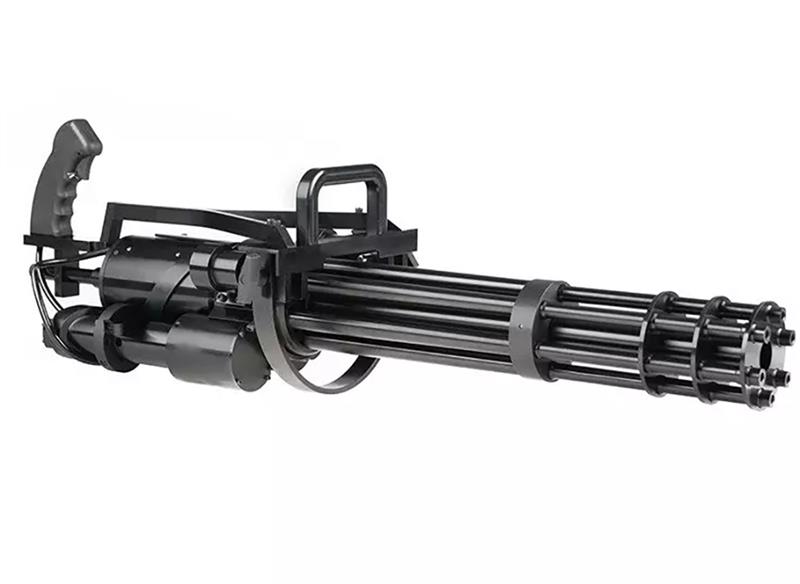

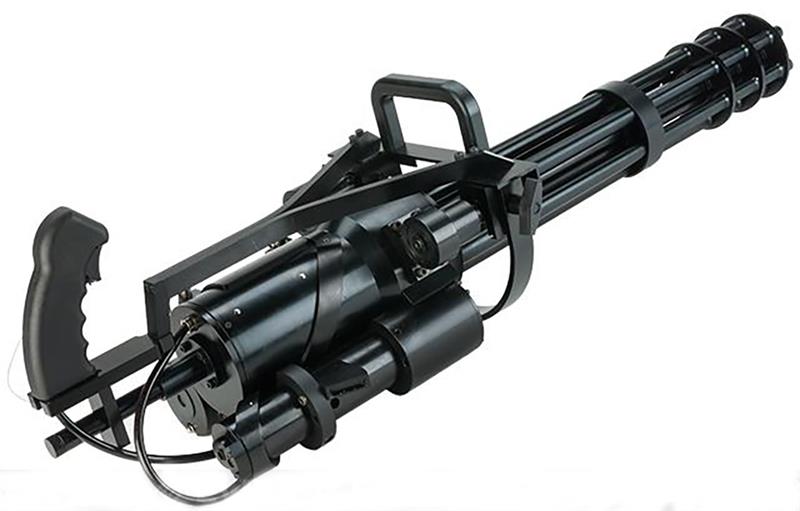


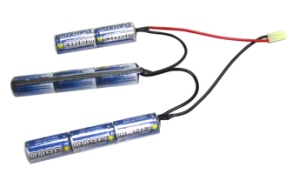
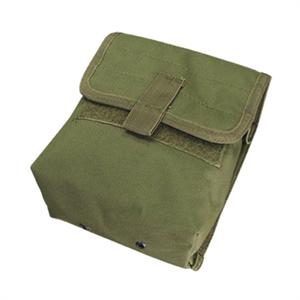
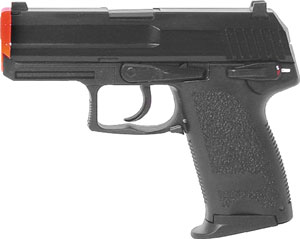
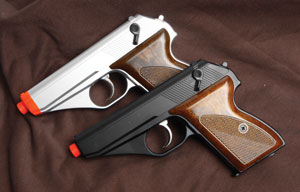
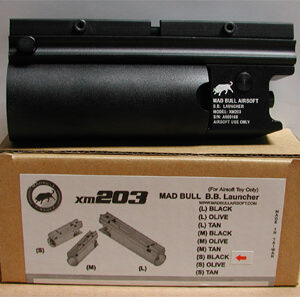

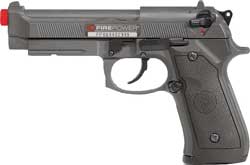

Reviews
There are no reviews yet.